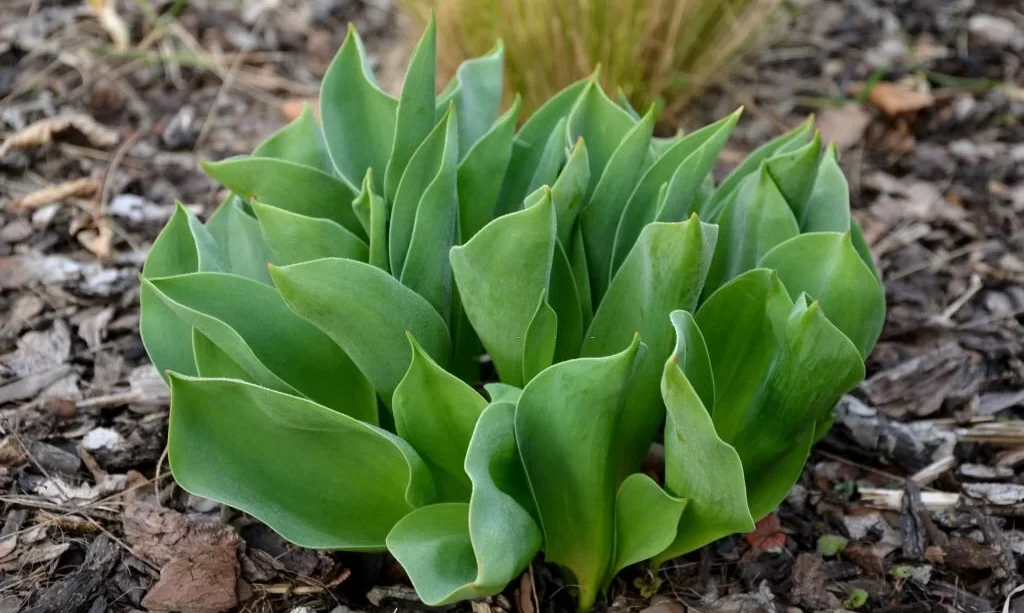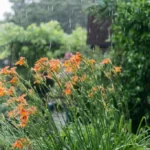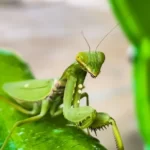Hostas, with their lush foliage and diverse array of varieties, have become a staple in gardens, adding elegance and texture to outdoor spaces. While these perennial plants are often propagated through division, growing hostas from seed offers gardeners an exciting and rewarding alternative. Cultivating hostas from seed allows for a wider range of possibilities in terms of colors, patterns, and characteristics. In this comprehensive guide, we will explore the intricacies of growing hostas from seed, providing step-by-step insights to help both novice and seasoned gardeners embark on this rewarding journey. Whether you’re seeking to expand your hosta collection or infuse your garden with new variations, this guide will equip you with the knowledge to nurture hostas from seed to maturity.
- USDA Hardiness Zone: 3-8.
- Beautiful colorful plant. The leaves of Hosta is rare purple that make a wonderful supplement for your home, garden or balcony.
- Hosta are easy to grow and completely hardy. Their preferred growing conditions include shade, semi-shade, and moist, well-drained soil that does not dry out.
- Attracting Pollinators. Bees are natural pollinators of hosta plants, as are the hummingbirds that frequent the tubular flowers.
- Uses. Hosta is a great ornamental plant, perfect for decorating gardens, offices, balconies, windows, etc.
Hostas and Their Seeds
Brief Description of Hostas and Their Varieties:
Hostas, also known as plantain lilies, are herbaceous perennials prized for their attractive foliage and shade tolerance. With a vast array of varieties, hostas exhibit diverse leaf shapes, sizes, and colors, making them a popular choice for landscaping.
Overview of Hosta Seeds – Characteristics and Viability:
Hosta seeds are small and often produced in abundance on mature plants. These seeds typically have a hard outer coat that may require scarification or pre-soaking to enhance germination. Understanding the characteristics of hosta seeds is crucial for successful cultivation.
Factors Influencing Hosta Seed Germination:
Several factors impact the germination of hosta seeds, including temperature, light conditions, and moisture. Hosta seeds are known to have variable germination rates, and providing optimal conditions is key to maximizing success in growing hostas from seed. The next sections will delve into the specifics of selecting, preparing, and planting hosta seeds to ensure successful germination and healthy seedling growth.
Selecting Hosta Seeds and Preparation
Choosing Hosta Seeds Based on Preferences and Garden Conditions:
Select hosta seeds based on the specific characteristics you desire in your garden. Consider factors such as leaf color, size, and variegation. Additionally, take into account the growing conditions of your garden, such as sunlight levels and soil type, to choose hosta varieties that thrive in your specific environment.
Ensuring Seed Viability through Proper Storage and Testing:
Optimal storage conditions are crucial for maintaining seed viability. Store hosta seeds in a cool, dry place, and consider using airtight containers to prevent moisture and temperature fluctuations. Before planting, perform a germination test by placing a few seeds in a damp paper towel to gauge their viability.
Pre-soaking Hosta Seeds for Optimal Germination:
Some hosta seeds have hard outer coats that can inhibit germination. To overcome this, pre-soak the seeds for 24-48 hours before planting. This process helps soften the seed coat, facilitating better water absorption and germination.
Planting Hosta Seeds
Selecting an Appropriate Planting Time:
Plant hosta seeds at the appropriate time based on your local climate and growing season. In temperate regions, starting seeds indoors 8-10 weeks before the last expected frost allows for a head start, while sowing directly outdoors can be done in early spring or fall.
Choosing the Right Growing Medium for Hosta Seeds:
Use a well-draining and sterile seed-starting mix for planting hosta seeds. This medium provides the necessary aeration and moisture retention for successful germination and early seedling growth.
Sowing Hosta Seeds Indoors and Outdoors:
Indoors: Place pre-soaked hosta seeds on the surface of the seed-starting mix, gently pressing them into the soil. Cover lightly with a thin layer of the mix. Maintain consistent moisture and provide indirect light.
Outdoors: Create small furrows in the prepared garden bed, sow seeds, and cover with a light layer of soil. Water gently and protect the area from extreme weather conditions.
Proper Spacing and Depth for Planting Hosta Seeds:
Space hosta seeds according to the anticipated size of the mature plants. Plant seeds at a depth of approximately twice their diameter. Adequate spacing ensures good air circulation and minimizes competition among emerging seedlings.
By carefully selecting hosta seeds, ensuring their viability, and providing optimal conditions for planting, you set the foundation for successful germination and the healthy development of hosta seedlings. The next steps will delve into the germination process and subsequent care for hosta seedlings.
Germination and Seedling Care
Providing Ideal Conditions for Germination:
Maintain a consistently warm and humid environment for hosta seed germination. Ideal temperatures range between 65-75°F (18-24°C). Covering the seed trays or pots with plastic wrap helps retain moisture. Expect germination to occur within 14-21 days.
Caring for Hosta Seedlings – Light, Temperature, and Moisture Requirements:
Once germinated, provide ample light to the seedlings. A south-facing windowsill or fluorescent grow lights can be used. Keep the temperature consistently cool, around 60-70°F (15-21°C), and ensure the soil remains consistently moist but not waterlogged. Maintain a balance to prevent damping off.
Transplanting Hosta Seedlings to Larger Containers or Garden Beds:
When seedlings develop their second set of true leaves, they are ready for transplanting. Gently lift seedlings and transplant them into larger containers or directly into the garden bed. Provide sufficient spacing between plants to accommodate their mature size.
Transplanting Hostas to the Garden
Selecting a Suitable Location for Hostas in the Garden:
Choose a location with the appropriate light conditions for the specific hosta varieties you are growing. Most hostas prefer partial to full shade, but some tolerate more sunlight. Ensure the soil is well-draining and rich in organic matter.
Hardening Off Hosta Seedlings Before Transplanting:
Gradually acclimate hosta seedlings to outdoor conditions before transplanting. Start by placing them in a sheltered spot for a few hours each day, gradually increasing exposure to sunlight and outdoor conditions over the course of a week.
Ensuring Proper Spacing and Soil Conditions for Mature Hostas:
Transplant seedlings to their final garden location with adequate spacing to allow for mature growth. Plant them at the same depth as they were in their containers. Amend the soil with compost to improve fertility and water retention.
As hostas continue to grow and mature, they will reward your efforts with their distinctive foliage and graceful presence in the garden. Proper care during the germination and transplanting stages contributes significantly to the long-term health and vigor of hostas. The following sections will delve into the ongoing care and maintenance of hostas as they thrive in your garden.
Care and Maintenance of Hostas
Watering and Fertilizing Hostas for Optimal Growth:
Hostas thrive in consistently moist but well-draining soil. Water regularly, especially during dry spells, and avoid waterlogged conditions. Apply a balanced, slow-release fertilizer in early spring to support healthy foliage development.
Protecting Hostas from Pests and Diseases:
Keep a vigilant eye for common pests like slugs and snails, which are attracted to hostas. Employ natural or chemical methods to control these pests. Additionally, practice good garden hygiene to prevent diseases such as crown rot.
Dividing and Propagating Hostas as They Mature:
As hostas mature, they may benefit from division to maintain their vigor and prevent overcrowding. Dividing hostas every few years allows you to create new plants and rejuvenate existing ones. This process involves lifting the plant, dividing the clumps, and replanting them.
Conclusion
In conclusion, growing hostas from seed offers a rewarding journey from tiny seeds to lush, vibrant foliage in your garden. By understanding the intricacies of selecting seeds, providing optimal germination conditions, and caring for seedlings as they mature, you can enjoy the unique beauty of hostas tailored to your preferences.
As hostas grace your garden with their distinctive leaves and elegant presence, ongoing care and maintenance play a crucial role in their longevity and health. Regular watering, fertilizing, and protection from pests contribute to the flourishing of these shade-loving perennials.
Whether you’re a seasoned gardener expanding your hosta collection or a beginner captivated by the allure of these versatile plants, the process of growing hostas from seed enriches your gardening experience. Witnessing the transformation from a tiny seed to a mature hosta is not only gratifying but also a testament to the resilience and beauty of these beloved perennials. May your hosta-filled garden thrive and bring you joy for years to come!





